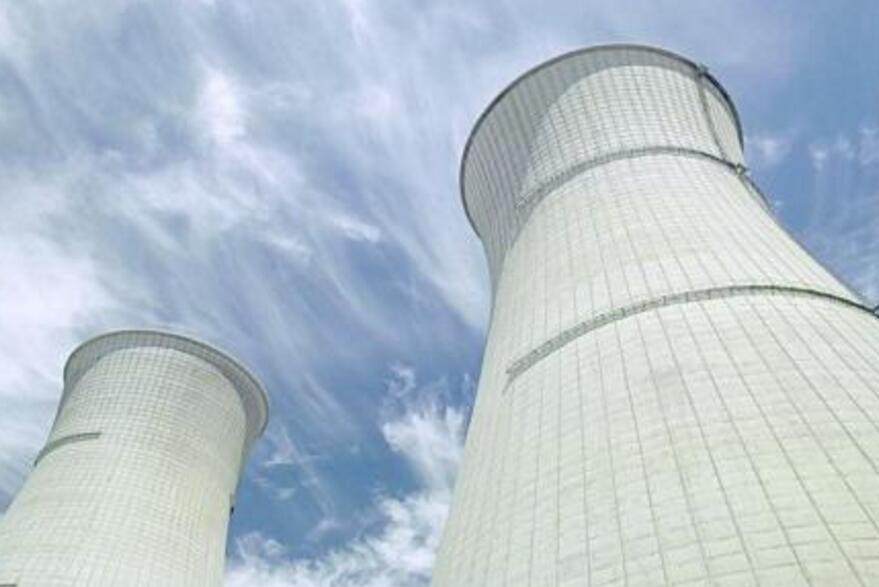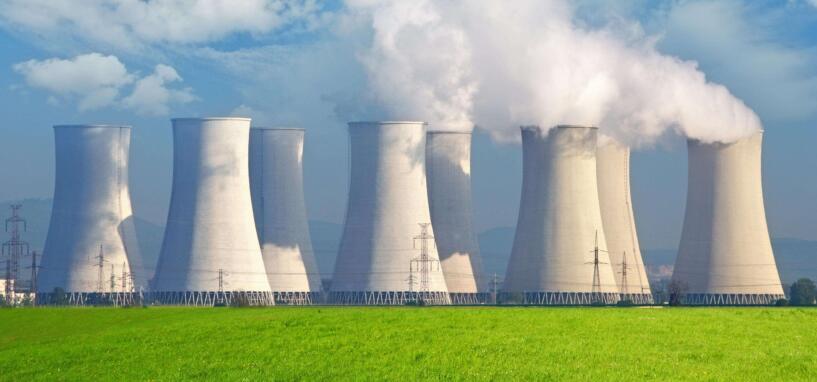When we hear about nuclear energy, we first think of nuclear weapons, atomic bombs and other nuclear weapons. It gives us the feeling that energy is huge, radiation is very powerful, and it is very dangerous. Let's come together to understand the nuclear energy, is it what we think.
There are two ways to develop nuclear energy: one is the fission of heavy elements, that is, nuclear fission. The larger mass of nuclear capture neutrons split into two (or more) medium-quality nuclei, such as fission of uranium; The fusion of elements is also nuclear fusion, combining two or more light cores into a larger mass such as ruthenium, osmium, lithium, and the like. The process of heavy nuclear fission or light nuclear fusion changes the structure of the core, forming a new nucleus, and releasing one or several particles is called a nuclear reaction. Nuclear energy is the energy released when the atomic nucleus structure is redistributed and combined, also known as "atomic energy." Nuclear fusion releases more energy than nuclear fission. The atom is the smallest particle that constitutes elemental and compound, and consists of protons, neutrons, and electrons. The core part of an atom is called the nucleus and consists of protons and neutrons.
The atomic energy of matter is several million times or more than ten million times more than chemical energy, and nuclear fusion is more energy than nuclear fission. The use of self-sustaining nuclear fission or the huge energy instantaneously released by the fusion reaction, which produces an explosion and has a weapon of massive damage and destruction. It mainly includes fission weapons (first-generation nuclear weapons, usually called atomic bombs) and fusion weapons (also known as hydrogen bombs, which are divided into two levels and three levels). Nuclear weapons, also called nuclear weapons or atomic weapons, refer to weapons of mass destruction related to nuclear reactions, including hydrogen bombs, atomic bombs, neutron bombs, three-phase bombs, and anti-material bombs.
The nuclear reaction does not produce carbon dioxide that aggravates the global warming effect. It does not cause air and pollution. The energy released is huge. For example, the energy released by the complete fission of 1 kilogram of uranium nuclei is equivalent to the chemical energy released by the burning of 2,700 tons of standard coal. Therefore, it can also be used as a power source for nuclear power, satellite or ship, which greatly enhances the endurance of satellites, nuclear submarines and aircraft carriers.

Nuclear energy, which comes from the nucleus. It should be said that all planets should have nuclear energy. There are two ways to generate nuclear energy: one is to release heat when the heavier nuclei split into two intermediate mass nuclei; the other is to release when the two lighter nuclei are aggregated into an intermediate mass of nuclei. Heat out.
So is there any nuclear energy (also called "atomic energy") in any atomic nucleus? In fact, it is true, no doubt. The key question is how to make the nucleus fission or fusion and how to artificially control the fission or fusion process.
It is now found that three atoms are prone to fission, they are uranium-235, thorium-239 and uranium-233. Only uranium-235 is naturally occurring. The other two can be made by hand. This atom will fission as long as it absorbs a neutron and releases heat and 2-3 neutrons. The released neutrons can be used for fission of other atoms, so that the fission reaction continues. This process is called a chain reaction. If it is used for an atomic bomb, this reaction process does not need to be controlled, and it is hoped that it will react as quickly as possible. If it is used in a nuclear reactor, it needs to be controlled. Generally, graphite or cadmium is used to absorb excess neutrons, which slows down the reaction.
The conditions required for nuclear fusion are very rare. For example, the fusion reaction of lanthanum and cerium requires extremely high temperature (15 million degrees Celsius) and pressure (more than 300 billion atmospheres). Today's science and technology is difficult to achieve. After the atomic bomb explosion, it was found that the high temperature and high pressure generated by the atomic bomb explosion can meet the conditions of nuclear fusion, and it can also be made into a more powerful nuclear weapon. This is the hydrogen bomb. After the first hydrogen bomb explosion in 1952, scientists have been trying to control the process of hydrogen bomb explosion, and then continuously extract the nuclear fusion energy for the benefit of mankind.

1. Nuclear fission, opening the binding force of the nucleus.
Nuclear fission is currently the main form of nuclear power generation and power generation, which can be used to build nuclear power plants, reactors for production or research, nuclear power plants, nuclear weapons, and so on.
2. Nuclear fusion, the atoms of the atoms fuse together.
The main application of fusion in the field of hydrogen bombs, the current controllable and sustainable nuclear fusion is far from being achieved.
3. Nuclear decay, a much slower form of natural energy release.
Nuclear decay is also widely used in medical, food, biological, mining and other businesses. Specific applications can search for terms such as irradiation devices and ray accelerators.

1. Power generation or power supply (nuclear power plants, shipborne or spaceborne nuclear reactors)
2. Activation analysis (analytical substance composition);
3. Radiological reconnaissance or inspection (a machine used by customs);
4. Kill or eliminate cancer cells (medicine);
5. Improve new varieties (agriculture);
6, flaw detection (industrial);
7. Desalination of seawater (the most efficient method of seawater desalination);
8. Used to manufacture nuclear weapons (atomic bombs, hydrogen bombs, etc.).

Plug-In Connecting Terminals,Insulated Spade Terminals,Cable Connector Double Spade Terminals,Vinyl-Insulated Locking Spade Terminals
Taixing Longyi Terminals Co.,Ltd. , https://www.lycopperterminals.com
![<?echo $_SERVER['SERVER_NAME'];?>](/template/twentyseventeen/skin/images/header.jpg)